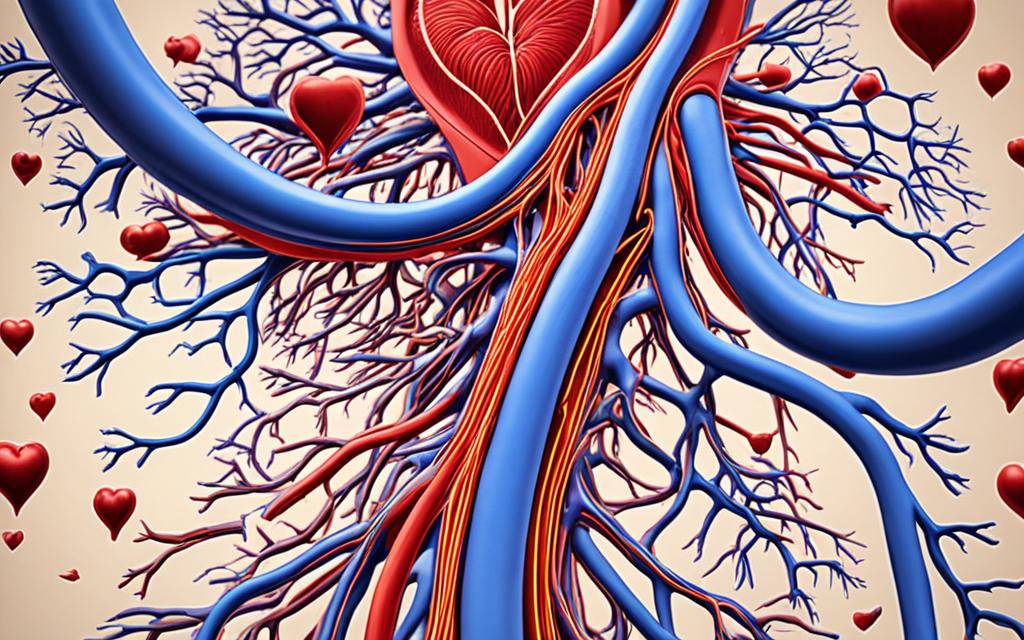The right coronary artery is a crucial blood vessel that plays a vital role in supplying oxygenated blood to the right side of your heart. This article will provide a comprehensive overview of the right coronary artery, including its anatomy, function, common health issues, diagnostic methods, and treatment options. By understanding the importance of the right coronary artery, you can take proactive steps to maintain your heart health and reduce the risk of potential complications.
The right coronary artery originates from the aorta, the main blood vessel that carries oxygenated blood from your heart to the rest of your body. It then travels along the right side of your heart, supplying blood to the right atrium, right ventricle, and parts of the interventricular septum. The right coronary artery also has several branches, including the acute marginal artery, the right posterior descending artery, and the right posterolateral artery, which further distribute blood to various regions of your heart.
The primary function of the right coronary artery is to supply oxygenated blood to the right side of your heart, including the right atrium and ventricle. This ensures that the right side of your heart receives the necessary nutrients and oxygen to function efficiently. The right coronary artery also plays a crucial role in providing blood to the interventricular septum, which helps to maintain the structural integrity and proper functioning of your heart.
Understanding the Anatomy of the Right Coronary Artery
The right coronary artery originates from the aorta, the main blood vessel that carries oxygenated blood from your heart to the rest of your body. It then travels along the right side of your heart, supplying blood to the right atrium, right ventricle, and parts of the interventricular septum. The anatomy of the right coronary artery is crucial to understanding its role in maintaining your heart’s health.
The origin and course of the right coronary artery begin at the aortic root, where it branches off from the aorta. As it travels along the right side of your heart, the right coronary artery provides essential blood supply to various cardiac structures, including the right atrium and ventricle, as well as the interventricular septum, which separates the two ventricles.
Furthermore, the branches of the right coronary artery play a vital role in distributing blood throughout your heart. These branches include the acute marginal artery, the right posterior descending artery, and the right posterolateral artery, each responsible for supplying blood to specific regions of the myocardium, the muscular wall of your heart.
| Anatomical Structure | Description |
|---|---|
| Origin | The right coronary artery originates from the aortic root, branching off from the aorta. |
| Course | The right coronary artery travels along the right side of the heart, supplying blood to the right atrium, right ventricle, and parts of the interventricular septum. |
| Branches | The right coronary artery has several branches, including the acute marginal artery, the right posterior descending artery, and the right posterolateral artery, which further distribute blood to various regions of the heart. |
The Function of the Right Coronary Artery
The primary function of the right coronary artery is to supply oxygenated blood to the right side of your heart, including the right atrium and ventricle. This ensures that the right side of your heart receives the necessary nutrients and oxygen to function efficiently. The right coronary artery also plays a crucial role in providing blood to the interventricular septum, which helps to maintain the structural integrity and proper functioning of your heart.
The importance of the right coronary artery cannot be overstated, as it is responsible for delivering blood supply to the heart. Without the consistent and reliable blood flow provided by the right coronary artery, the right side of your heart would not receive the essential resources it needs to pump blood effectively throughout your body.
By understanding the function of the right coronary artery, you can better appreciate the vital role it plays in maintaining your overall heart health. Ensuring the right coronary artery remains open and unobstructed is crucial for supporting the heart’s ability to pump blood efficiently and distribute oxygen-rich blood to the various tissues and organs of your body.
Common Health Issues Associated with the Right Coronary Artery
The right coronary artery can be affected by various health conditions, with coronary artery disease being the most prevalent. Coronary artery disease is characterized by the buildup of plaque, a fatty substance, within the walls of the right coronary artery, leading to a narrowing or blockage of the vessel. This can result in reduced blood flow and oxygen supply to the right side of the heart, potentially causing symptoms such as chest pain (angina) or a heart attack (myocardial infarction).
Atherosclerosis, the gradual hardening and narrowing of the arteries, is often the underlying cause of coronary artery disease. As the buildup of plaque progresses, it can restrict the flow of oxygenated blood through the right coronary artery, increasing the risk of myocardial infarction or angina. Early detection and treatment of these health issues are essential for maintaining the health of your right coronary artery and preventing potentially life-threatening complications.
Understanding the risks and seeking prompt medical attention is crucial for maintaining the health of your right coronary artery. Regular check-ups, lifestyle modifications, and early intervention can help mitigate the impact of coronary artery disease and other health issues with the right coronary artery.
Diagnostic Approaches
To diagnose any issues with the right coronary artery, healthcare professionals may employ a variety of diagnostic methods. One of the most common techniques is coronary angiography, which involves injecting a contrast dye into the right coronary artery and using X-ray imaging to visualize the artery’s structure and identify any potential blockages or narrowing.
Additionally, stress tests, such as exercise stress tests or pharmacological stress tests, can be utilized to evaluate the function of the right coronary artery and detect any areas of reduced blood flow. These tests provide valuable information about the artery’s performance under physical or pharmaceutical stress.
Imaging techniques, including echocardiography, computed tomography (CT) scans, and magnetic resonance imaging (MRI), can also offer detailed insights into the right coronary artery’s anatomy and overall health. These non-invasive imaging methods allow healthcare professionals to assess the structure and function of the artery without the need for more invasive procedures.
| Diagnostic Method | Description |
|---|---|
| Coronary Angiography | Injection of a contrast dye into the right coronary artery and X-ray imaging to visualize the artery’s structure and identify any blockages or narrowing. |
| Stress Tests | Evaluation of the right coronary artery’s function under physical or pharmacological stress, identifying areas of reduced blood flow. |
| Imaging Techniques | Non-invasive methods such as echocardiography, CT scans, and MRI to assess the right coronary artery’s anatomy and overall health. |
Conclusion
The right coronary artery is a vital component of your heart’s circulatory system, responsible for supplying oxygenated blood to the right side of your heart. By understanding the anatomy, function, and potential health issues associated with the right coronary artery, you can take proactive steps to maintain your heart health.
Regular check-ups and prompt medical attention for any suspected issues can help prevent or manage conditions that may affect the right coronary artery. Lifestyle modifications, such as a healthy diet, regular exercise, and managing underlying health conditions, can also play a crucial role in maintaining the health of your right coronary artery.
Remember, your heart’s well-being is paramount, and by prioritizing the health of the right coronary artery, you can enjoy a healthier and more fulfilling life. By staying informed and taking the necessary precautions, you can ensure that the right coronary artery continues to function efficiently, providing your heart with the essential oxygen and nutrients it needs.










